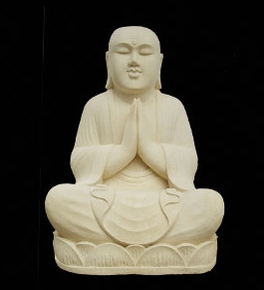 The Column One slot on the Los Angeles Times frontpage is, according to a compilation of these tales, "a daily jolt of all-engrossing storytelling without rival in American journalism." Unfortunately, too much emphasis is occasionally placed on the storytelling and too little on the journalism.
Such was the case with a nice little feature earlier this month about Buddhist chaplains at Beth Israel Medical Center in New York. Written by one of the Times' best reporters, "Zen in their bedside manner" starts off quite promisingly:
The Column One slot on the Los Angeles Times frontpage is, according to a compilation of these tales, "a daily jolt of all-engrossing storytelling without rival in American journalism." Unfortunately, too much emphasis is occasionally placed on the storytelling and too little on the journalism.
Such was the case with a nice little feature earlier this month about Buddhist chaplains at Beth Israel Medical Center in New York. Written by one of the Times' best reporters, "Zen in their bedside manner" starts off quite promisingly:
It was 8 a.m., and the subject was death.
A 55-year-old man was wasting away from lungcancer and cirrhosis. His weight was plummeting and his brain was swelling. But he was in denial, refusing to discuss hospice care or consider a "do not resuscitate" order. ...
"This has been really sad," said the Rev. Robert Chodo Campbell, a large man with thick brows who was wearing what appeared to be a cross between a judo outfit and hospital scrubs. He told the group that when faced with a similar case in the past, he had decided to disclose his personal battle with alcoholism to the patient -- also an alcoholic -- in hopes of spurring a conversation that might help ease the man's mental anguish and prepare him for whatever lay ahead. ...
And Chodo operates under a different set of rules than most chaplains as he spreads the spirit of Buddhism through the halls of Beth Israel, a 1,368-bed medical center in Manhattan. "If it seems appropriate in the moment and one is sure of one's motives -- the well-being of the patient -- then why not?" the Zen chaplain asked.
According to the American Hospital Assn., about 68% of public hospitals have a chaplaincy program. But few have Buddhist monks, and none compares with the program at Beth Israel -- where more than 20 Buddhist chaplains and chaplains-in-training offer bedside meditation, interdenominational prayers and other assistance to pregnant women, dying cancer patients and even stressed hospital workers.
"There is one rabbi and two Catholic priests. They're great people, but the rabbi sees Jewish patients. The Catholics anoint the sick. Then there's everybody else," said the Rev. Koshin Paley Ellison, co-founder with Chodo of the New York Zen Center for Contemplative Care.
The rest of the article explains discuss the pros and cons, and debate, over alternate medicine and follows a chaplaincy student as he makes the rounds. One Jewish patient yells at the student, Bob Allen, for interrupting their meal and another, a Roman Catholic from the Philippines, says a Christian prayer with Allen.
What the article doesn't do is explain why Buddhist chaplains at Beth Israel outnumber priests by a factor of 10 or why there is only one rabbi at a historically Jewish hospital in New York City. I'm sure a handful of Beth Israel's patients are JewBus but they're certainly not 20 times more common than Jews who still practice Judaism. And what about the effectiveness of chaplaincy programs? Do patients suffer at the 32 percent of public hospitals that lack chaplains?
To be fair to the Times, I was looking around online for some answers to these questions and found a handful of stories written just like this one. I think I may have even penned one at my first newspaper. When death is the subject, there seems to be an inclination to focus on the compelling scenes of compassion and suffering. Which makes the need for a story that looks at the value of hospital chaplains, as opposed to the work they do, all the more needed.
